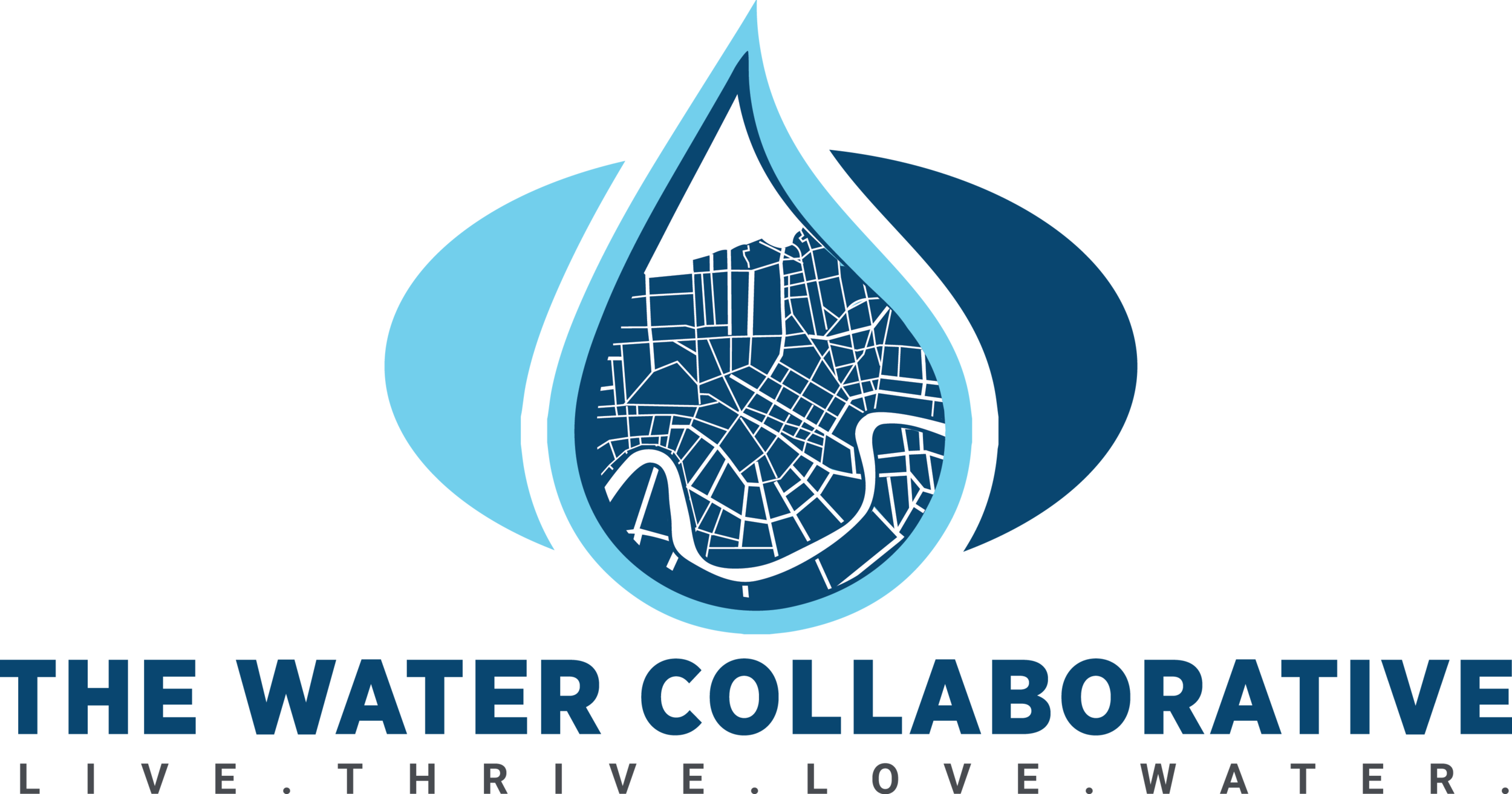2023 Saltwater Intrusion: Understanding the Impact on Plaquemines Parish
By: Lyla Klein, Fellow for the 2024 Orleans Lead Testing Study
First forecast published by the USACE - Oct. 2023: By this time, two water intake systems in Plaquemines Parish had already been inundated.
Overview of the Intrusion Event
In October 2023, a saltwater intrusion from the Gulf of Mexico was expected to reach the City of New Orleans. This intrusion, where saltwater moves up the river, was caused by a lack of rainfall in the Midwest region of the United States contributing to lower river flows. The result was a large saltwater wedge in the Mississippi River, formed by dense saltwater moving upstream as the insufficient freshwater flows lacked the volume to push back. The lower parishes of Louisiana rely on the Mississippi River for their drinking water supply. This dependence makes them particularly susceptible to saltwater intrusion, a threat exacerbated by climate change and aging infrastructure. The river is managed by the United States Army Corps of Engineers (USACE), and regional collaboration was essential in supporting communities during the crisis.
The Army Corps constructed an underwater sill at river mile 64 in Myrtle Grove, LA, using sediment to combat the wedge. In late October, NOLA Ready announced that the wedge had regressed and the city was considered safe thanks to the success of the Army Corps' underwater sill. However, not everyone was safe. Coastal communities south of New Orleans, such as Plaquemines Parish, continued to face months with affected drinking water. The saltwater intrusion started in June of 2023 and lasted over 200 days in the Plaquemines region.
Impact on Plaquemines Parish
The situation in Plaquemines Parish communities was not just challenging, but dire. Despite this intrusion being considered the best-case scenario for Greater New Orleans, the community has been deprived of a basic necessity—safe water—for over six months. The water utilities in Plaquemines Parish service 23,000 people, with five water treatment plants that treat 11.5 million gallons of water a day. During the 2023 saltwater intrusion, three of the five treatment plants were compromised. Residents had to rely on “bottled water for bathing, cooking, and drinking since June.” In June 2023, salt quantities in drinking water reached 250 milligrams per liter, the federal limit for safe water. Residents in Plaquemines were frustrated at handling of the situation, as they “did not know for several weeks” that there was an issue with their water. This situation was particularly dire due to the aging infrastructure in Plaquemines Parish, which likely includes some water service lines made of lead.
It's critical to understand that there is no safe level of lead exposure; even in small amounts, lead is highly toxic and poses a significant threat to our health. When saltwater is in lead pies, they corrode, releasing harmful amounts of metal into the water stream. Furthermore, lead poses substantial dangers to infants and young children. Exposure to this metal is associated with detrimental effects on the brain and nervous system, learning disabilities, and physical ailments such as an elevated risk of heart and kidney diseases. The extent of lead exposure's impact on a child may not be fully realized for several years, underlining the urgency of addressing this issue. Plaquemines parish has no lead awareness program; they are a part of the Louisiana Lead Prevention Program, funded by the Center for Disease Prevention (CDC), which conducted a blood lead testing pilot project in 2018. Still, nothing has been done since then.
In response to the unprecedented event, innovative measures were implemented to secure clean water for the community. Four reverse osmosis machines played a pivotal role in purifying saltwater, transforming it into safe drinking water. Additionally, the USACE undertook an extensive effort to barge in over 150 millions of gallons of fresh water to dilute the salty water being collected from the intakes. Together, these strategies helped alleviate the issues, but highlights the need for targeted support and resources for smaller communities.
Looking Towards The Future
The recent saltwater intrusion event highlights the broader challenge posed by Louisiana’s aging infrastructure and underscores the necessity for proactive public health and safety measures. The prolonged reliance on lead pipes, compounded by threats such as saltwater intrusion from climate change, emphasizes the importance of investing in infrastructure upgrades and mitigation plans. To protect the well-being of current and future generations, identifying and entirely replacing lead pipelines on both public space and private property is necessary.
Last year's saltwater intrusion will not be a one-time occurrence, with droughts in the Mississippi River becoming a seasonal issue with climate change and rising sea levels. Furthermore, comprehensive monitoring systems should be established to ensure the timely detection of water quality issues, followed by a prompt response and backing by the Plaquemines Parish Water Board. Looking to the future, it is crucial to focus on smaller, less populated coastal communities that often bear the brunt of climate and public health crises. Providing tailored support to these communities is essential to help them navigate these unprecedented challenges.

